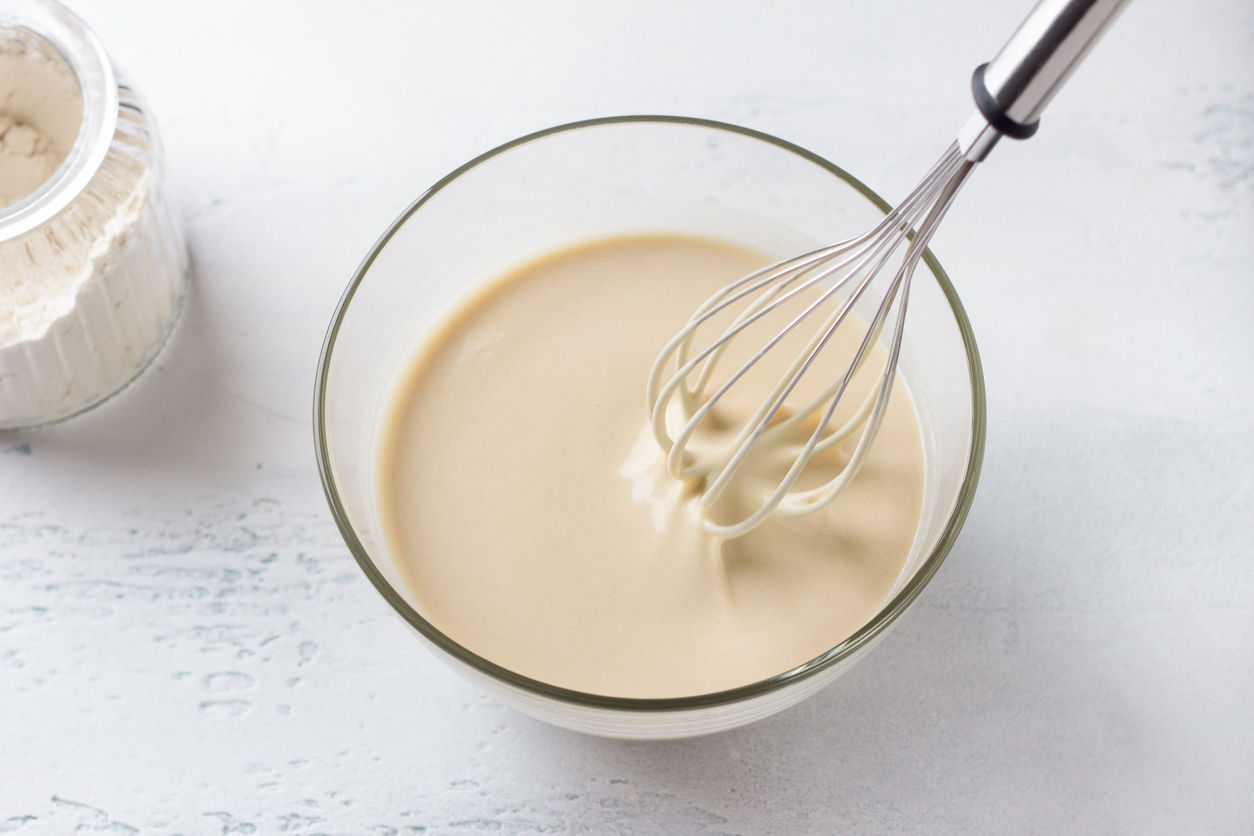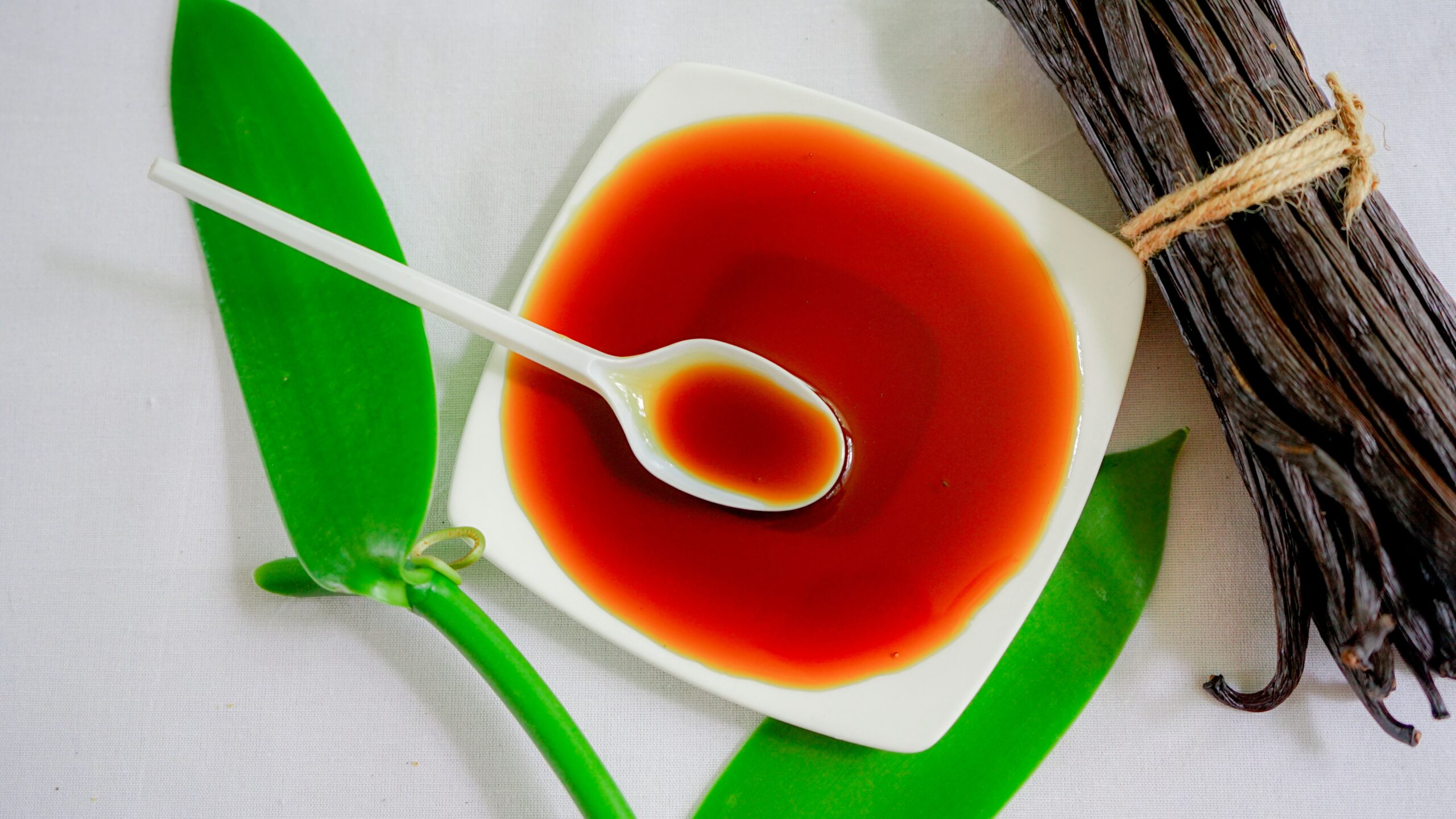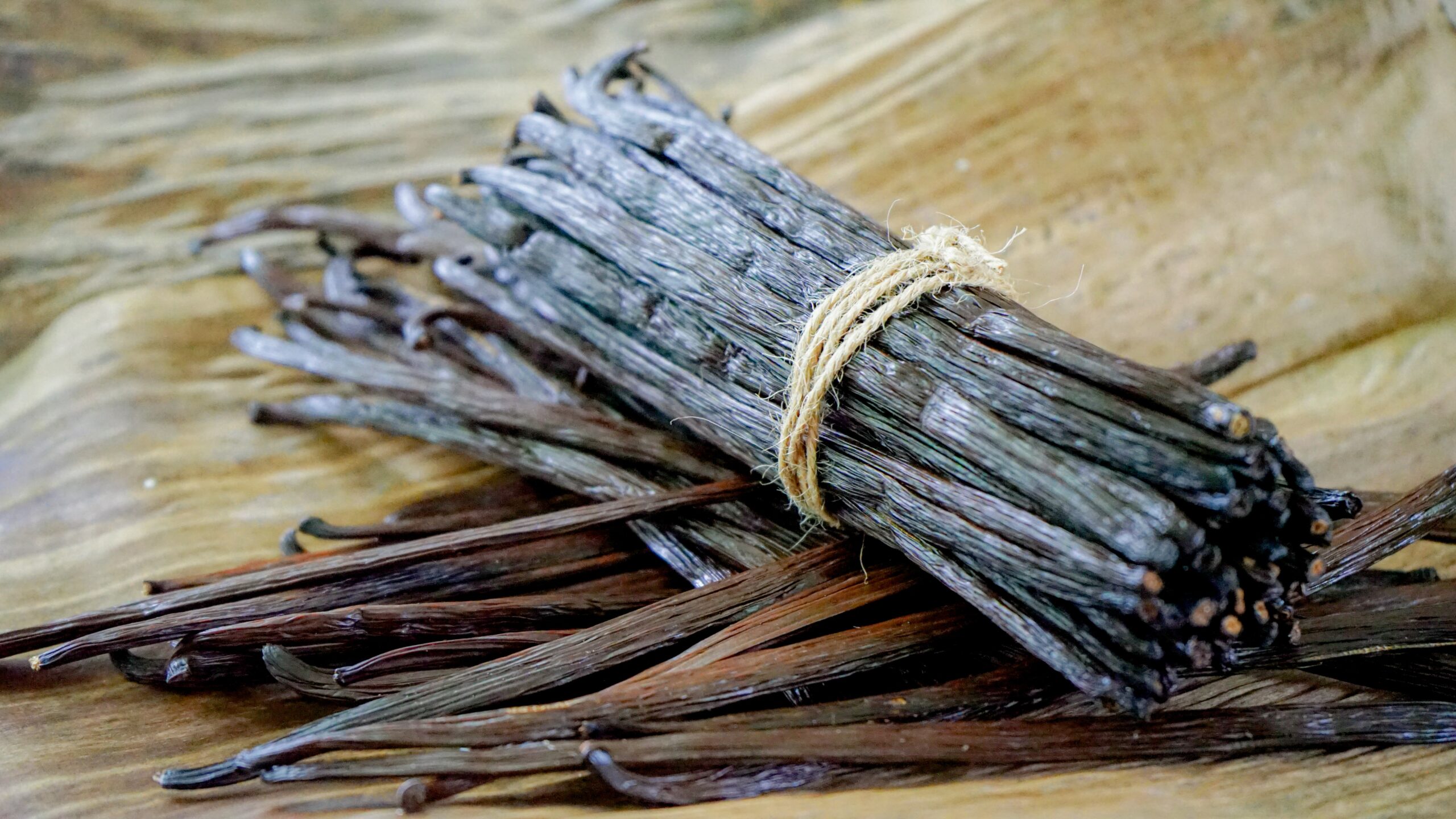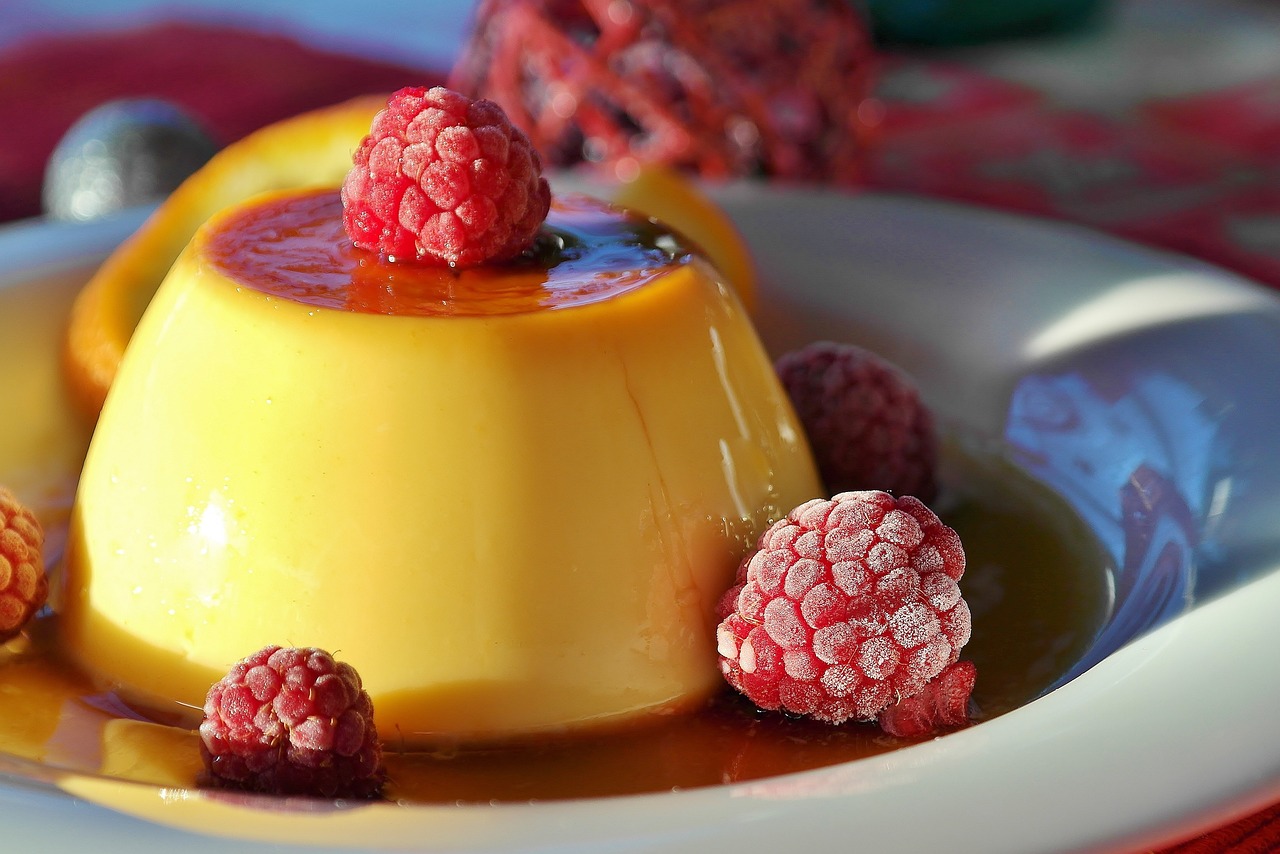Introduction
Nothing makes you happier than the aroma of vanilla emanating from freshly baked items, let’s face it. Vanilla is widely used in dessert recipes, whether in ice creams or baked goods. However, if you check the recipes, some call for vanilla extract, while others call for vanilla essence. Although vanilla essence and extract are frequently confused, they have essential distinctions that impact their applications, nutritional content, and flavour. One of these goods is noticeably healthier than the other despite the two being produced in entirely different ways. Look closer to compare the two. You’ll see that they differ noticeably in terms of flavour, colour, or production method. Read on to understand the main distinctions between these two components to utilize them correctly in recipes.
Vanilla Essence
The usual ingredients used to create vanilla essence, also known as artificial vanilla extract, are water, ethanol, propylene glycol, emulsifiers, and fragrances and colours that are chemically manufactured. Like vanilla extract, vanilla essence derives its taste from vanillin, yet utilizing vanillin instead of vanilla beans saves money. Vanilla essence is frequently thought to contain castoreum, a fluid from the anal glands of beavers that smells somewhat like vanilla. Castoreum is a rare ingredient in food, though.
Vanilla essence comes in two different varieties. First, there is artificially produced vanilla essence. In essence, the flavouring component is a vanilla extract imitation. This component is less fresh than the actual thing and contains many chemicals. Also available is concentrated vanilla essence. These goods may include 3–4 times the amount of vanilla extract they do. When they want a dish to have more vanilla flavouring, some bakers use it. However, these products lack their extract equivalents’ pure and delicate flavour. Bakers should always have a bottle of vanilla extract on hand if they want to create the most exquisite meals. After all, a dish is only as good as the sum of its elements.
Vanilla Extract
Vanilla beans are soaked in water and alcohol to produce vanilla extract. A vanillin in vanilla beans gives the extract its distinctive vanilla flavour. Every nation has a different standard for pure vanilla extract. Everyone who enjoys cooking should keep vanilla extract in their pantry. Vanilla beans need to be soaked in an alcohol/water solution for a long time to make vanilla extract. The extract is produced when the solution has finally absorbed the taste of the beans. Compared to its essence cousin, this flavouring ingredient is significantly purer. Bakers who want to make their own vanilla extract should use the best vanilla beans. People should be aware that the process is rather demanding, though. People should let the solution steep with the vanilla beans for at least a month before storing it in a dim area.
The Difference Between Vanilla Essence and Vanilla Extract
Therefore, what distinguishes vanilla extract from vanilla essence? Although it is the least expensive of the two, vanilla essence has a lower nutritional value and, in most situations, a worse flavour than vanilla extract, a naturally occurring substance. Here, the manufacturing, use, and dietary benefits will be discussed while responding to frequently asked questions about vanilla essence vs. vanilla extract.
1. Different Ingredients and manner of production
The critical distinction between vanilla essence and vanilla extract is found in the components and methods used to make them. Water, ethanol, propylene glycol, emulsifiers, flavourings, colourants, and/or all the following are frequently used to manufacture vanilla essence. While natural vanilla bean extracts, sugar, alcohol, and water are the main ingredients in vanilla extract. As you can tell from its contents, most of the vanilla extract is free of any artificial substances. The way these baking components are made distinguishes them most from one another. Vanilla essence, on the other hand, is a synthetic material that imitates the flavour of natural vanilla, as opposed to vanilla extract, a natural product prepared by soaking vanilla beans in alcohol.
2. Different flavour
Vanilla essence and extract have very different flavours. The latter lacks the authentic vanilla flavour, whereas the former has a richer, more nuanced flavour with subtle undertones. Choose vanilla extract if you want your baked goods to stand out from the crowd.
3. Alcohol Contents Varies
It is believed that compared to vanilla essence, vanilla extract often contains more alcohol. Vanilla essence has a substantially lower alcohol concentration than vanilla extract, which has just about 2-3% content. However, vanilla’s flavour and scent can be kept longer with a higher alcohol concentration.
4. Different colour
The colour of these two baking ingredients is another important distinction. Typically, vanilla extract is a dark brown with a faint reddish tint. On the other hand, vanilla essence generally is a lighter colour brown. However, from one product to another, the precise colour may differ.
5. Variation in Shelf Life
Compared to vanilla essence, vanilla extract has a longer shelf life. While the vanilla essence may only last for around 1-2 years and is more likely to lose flavour with time, vanilla extract can last for about 2-4 years if stored in a cold, dark environment. For the most significant results, using both items before they expire is preferable.
Different Uses of Vanilla Extract and Vanilla Essence
Although both vanilla essence and vanilla extract are primarily used in baking, their differences in quality and cost allow for different applications. Both have many uses besides baking. Learn to incorporate vanilla into salad dressing, tomato sauce, and seafood.
1. Make Brown Butter Sauce Better
Brown butter and vanilla are an unavoidable pairing when baking. The same is true of your delicious meals. Thanks to the two components’ roast, toasted characteristics, your old favourites may take on a new flavour.
2. Spice up hot beverages.
The addition of vanilla to hot beverages is one of its simplest uses. Warm milk and honey with a few drops of vanilla is the ultimate comfort food. You can also add a dash of vanilla to your morning coffee to improve your coffee experience. Rich vanilla-flavoured coffee will make you less likely to overdo the sugar.
3. Help caramelized roasted vegetables
Vanilla naturally pairs well with the caramel flavour currently caramelizing on roasted vegetables in the oven. Vegetables that have been roasted can benefit from vanilla extract in two ways. Their sweetness is first made more intense, and when the alcohol evaporates, more caramelization is added.
4. Spice up savoury foods with vanilla
It’s time for all of us to stop thinking of vanilla as being used in desserts. Adding depth and richness to savoury foods is also a terrific use for vanilla extract. Now is the perfect time to utilize pure vanilla extract’s complex flavour character. Add a dash of vanilla to flavorful and filling soups like butternut squash. Add vanilla essence to tomato sauces in the final few minutes of cooking to lessen acidity.
5. Strengthen Tropical Flavors
You might not always consider it when you bake, but vanilla is a tropical ingredient. Therefore, it will unavoidably enhance the flavours of other low foods, such as coconut.
6. Alternative to Wine in Risotto
In place of the wine, use the same quantity of stock and 1 teaspoon of vanilla extract to create risotto if you don’t have any. Like how wine imparts taste and scent, the alcohol will evaporate.
7. Customize your own smoothies and yoghurt with vanilla.
Plain yoghurt is less expensive to purchase than flavoured options and has less added sugar. Your preferred toppings can be added to plain yoghurt along with a small amount of honey or your preferred sweetener to liven it up. Try mixing vanilla extract, coconut flakes, and honey together. Numerous flavours work well together with vanilla. Try including vanilla in various smoothies with ingredients like strawberry, banana, pumpkin, coconut, etc.
8. Improve French toast, waffles, and pancakes
Vanilla can enhance the flavour of maple syrup. This hidden ingredient works well in almost any recipe that calls for maple, especially pancakes, waffles, and French toast. Your breakfast experience would be a meal to look for with a dash of vanilla and maple mixture in your favourite breakfast or snack staples.
9. Create Elegant Cocktails
Vanilla can make your favourite cocktails a little nicer and neutralize the tartness; add a little vanilla essence. Make smooth drinks with a sprinkle of vanilla and a warming drink for chilly days by adding a touch of vanilla to your beverages. Adding vanilla will create a tangy, refreshing beverage with a twist.
10. Add flavour to salad dressings
A light vanilla flavouring will diminish the tanginess of salad dressings made with vinegar. With fresh or dried fruit in salads, this technique works exceptionally well. When you eat this Mango Grilled Chicken Salad, you’ll think you’re dining at a five-star establishment thanks to the dressing, which has been blended with vanilla extract.
Common Questions Asked About Vanilla Essence and Vanilla Extract
Here are the most common questions asked by people who need to become more familiar with the nitty-gritty of vanilla essence and extract.
1. Which is healthier, vanilla extract or vanilla essence?
Both vanilla extract and essence are equally effective. However, vanilla extract is thought to be the healthier choice. This is so that no artificial flavours or additives are present, and it is manufactured naturally. Therefore, we advise choosing vanilla extract. You won’t regret purchasing it, even though it can be expensive. As you can see, vanilla extract is unquestionably a better option in terms of both quality and health. Though it won’t make you sick, vanilla essence contains many synthetic and chemical components, making vanilla extract a much healthier alternative.
2. Can Vanilla Extract Be Used Instead of Vanilla Essence?
In most recipes, vanilla extract can be used instead of vanilla essence. To achieve the best results, you might need to slightly change the quantity because this might impact the flavour and scent of the finished baked good. Although vanilla extract and essence are relatively similar products, there are a few factors to consider when switching from one to the other. If a recipe calls for vanilla essence and you only have vanilla extract on hand, use less than the recommended amount because vanilla extract is substantially more potent than vanilla essence. On the other hand, if your recipe calls for vanilla extract and you only have vanilla essence, you will need to add more vanilla essence to have the same flavour.
3. Can vanilla essence be made at home?
You cannot create vanilla essence at home because it is a chemically processed product. Having said that, homemade vanilla extract is a possibility. A glass bottle or jar, some vanilla beans, and some clear liquor (ideally vodka) are all you need. Any baker would appreciate homemade vanilla extract, which has a shelf life of up to three years and is a great, simple gift.
4. How is vanilla essence produced?
Vanilla essence is made without vanilla beans. Other items are mixed to create a flavour that is like the flavour of natural vanilla. Some of these sources include cow dung, lignin from specific plants, and clove oil, which produces the chemical eugenol. However, petrochemicals are not the only source of vanilla essence. Vanilla essence, often known as imitation vanilla, imitates the flavour of vanilla by using this synthetic vanillin, along with flavourings and colourants. Due to this manufacturing technique, vanilla essence is a wholly manufactured product that lacks both the health benefits and the authentic flavour of genuine vanilla.
5. Which is more expensive Vanilla essence or vanilla extract?
Vanilla essence is less expensive than vanilla extract; people who bake more frequently may find it an inexpensive and practical alternative. It is advised against using vanilla essence in a recipe where vanilla is one of the main ingredients because it has a less natural flavour. When used in a big batch of cookies or a large cake, when the recipe calls for a dash of vanilla, the weaker taste of vanilla essence might not be detectable.
Conclusion
In conclusion, the composition, flavour character, culinary applications, accessibility, and price of vanilla essence and extract differ. A rich and nuanced flavour profile is produced by steeping real vanilla beans in alcohol and water to create vanilla extract. It is frequently used in baking and cooking to give a variety of dishes an authentic vanilla flavour. While providing a more straightforward flavour profile, vanilla essence is a synthetic flavouring agent made chiefly from synthetic vanillin. It is more widely utilized in commercial food production as a more economical alternative.
While both vanilla essence and vanilla extract can add vanilla flavour to recipes, those seeking an authentic and intense vanilla taste may prefer to opt for natural vanilla extract. In contrast, vanilla essence can be a suitable option when the cost is a consideration or when a less complex vanilla flavour is acceptable.



